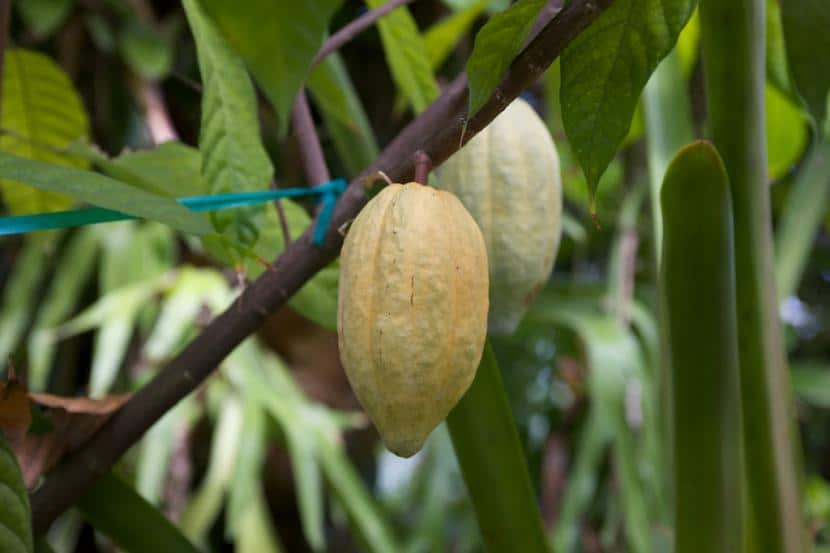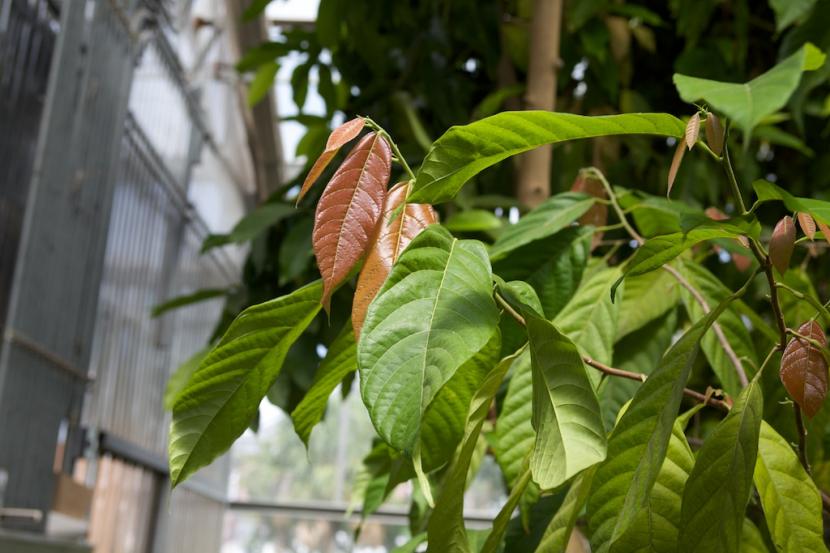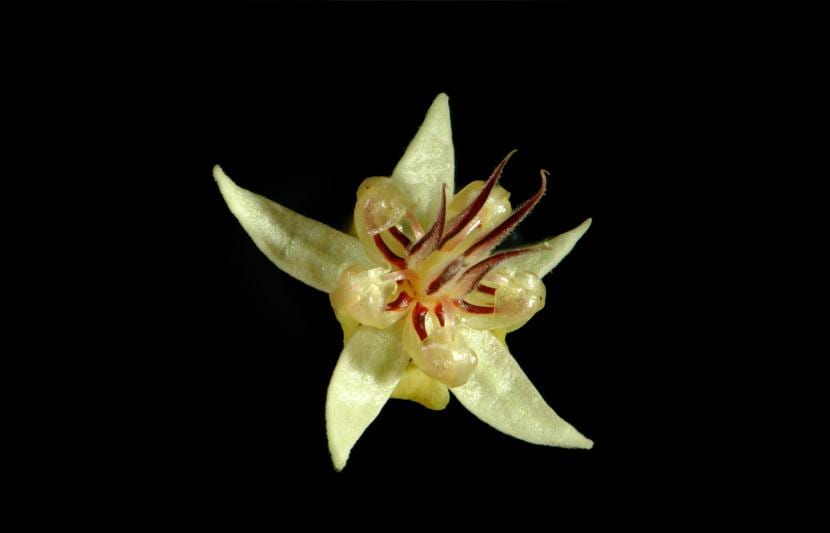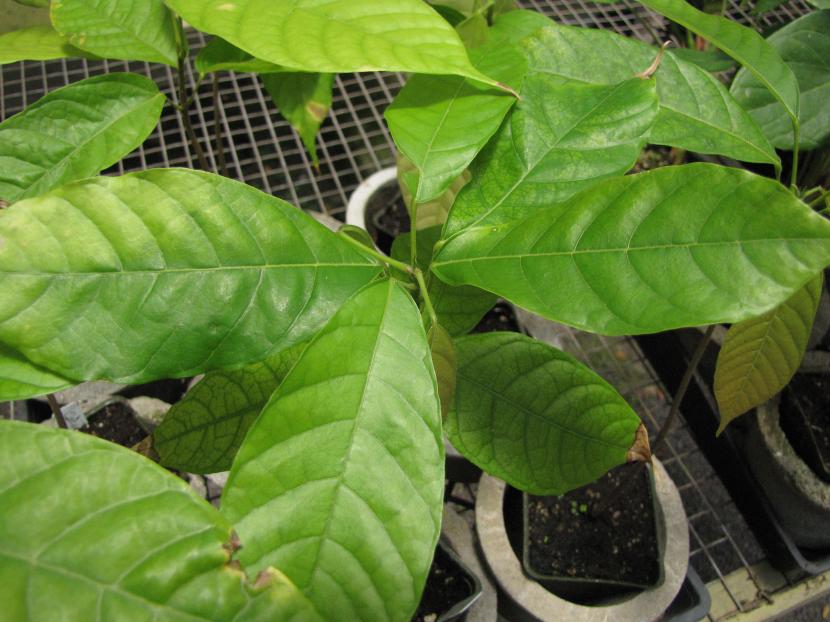
If you are one of those who prefer sweet flavors, then the Cacao tree is for you. This beautiful plant is perfect to have in tropical gardens around the world, and can also be grown in greenhouses or in very bright interiors.
Its fruits, which are edible, appear throughout the year. Do you want to know how to savor them? Discover what care does it require to have an optimal development.
Features

The cacao tree, also called cacao tree, is an evergreen tree about 8m high, which is lanceolate, with a very defined central rib. Newer shoots are brown in color very nice as you can see in the image above; presumably to prevent herbivorous animals, who love young shoots, from feeling the urge to eat them.
His scientific name is Theobroma cacao, and is originally from the largest jungle in the world: the Amazon. It grows quickly, always under the shade provided by the tallest plants, such as Musas sp (banana trees), or palm trees. Likes humid, warm environments, no extreme temperatures (Its ideal range is between 20 and 30ºC).

A peculiarity that this amazing and sweet species has is that both the flowers and the fruits sprout from the stems and branches. It is thus a cauliflower tree. Its small whitish-yellow flowers are composed of 5 petals, and are pollinated by flies.
The cocoa tree It will bear fruit for the first time when it is 4 years old., but it may be necessary to wait until the following year to be able to harvest an interesting quantity of fruits, the seeds of which will be sown in spring.

How to take care of yourself
The care you need are:
- Climate: warm. If the temperature drops below 15ºC in your area, protect it inside your home or in a greenhouse.
- Irrigation: frequent, between 2 and 3 times a week in summer, and 1 or 2 the rest of the year.
- Substratum: it will have to be porous, fertile, with a high content of organic matter. It is highly recommended to mix 60% compost or mulch with 30% vermiculite and 10% perlite.
- Exhibition: partial shade. Avoid putting it directly in the sun, as otherwise its leaves could burn.
- Sprays: If you live in a dry climate, you will need to spray often.
Do you have a cacao tree?
I liked your brief explanation, complete 🙂 att Ailen maria facebook.
Hi Ailen.
We are glad that you liked it 🙂